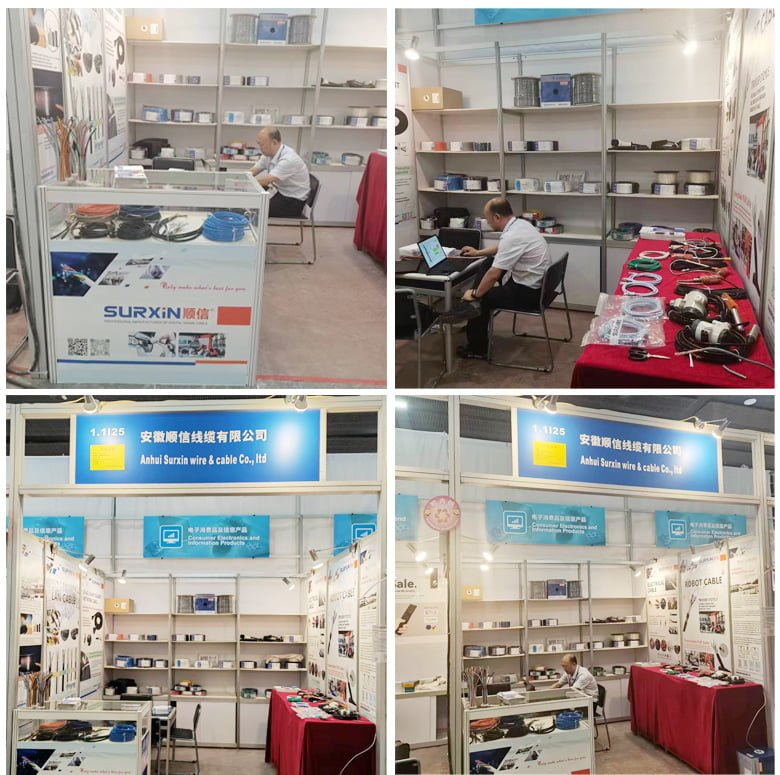டிஜிட்டல் சிக்னல் கேபிள்களின் நன்மைகள்
டிஜிட்டல் சிக்னல்களை அனுப்பும் போது, பயன்படுத்தப்படும் கேபிள்களின் தரம் முக்கியமானது. டிஜிட்டல் சிக்னல் கேபிள்கள் உயர்தர ஆடியோ மற்றும் வீடியோ சிக்னல்களை எந்தவித இழப்பும் அல்லது சிதைவும் இல்லாமல் கொண்டு செல்லும் வகையில் வடிவமைக்கப்பட்டுள்ளன. அவை பொதுவாக பல்வேறு பயன்பாடுகளில் பயன்படுத்தப்படுகின்றன, ஹோம் தியேட்டர்கள் உட்பட, தொழில்முறை ஆடியோ அமைப்புகள், மற்றும் டிஜிட்டல் சிக்னேஜ்.

டிஜிட்டல் சிக்னல் கேபிள்களின் மிகவும் பிரபலமான வகைகளில் ஒன்று HDMI ஆகும் (உயர்-வரையறை மல்டிமீடியா இடைமுகம்) கேபிள். டிவி போன்ற சாதனங்களை இணைக்க HDMI கேபிள்கள் பரவலாகப் பயன்படுத்தப்படுகின்றன, ப்ளூ-ரே பிளேயர்கள், கேமிங் கன்சோல்கள், மற்றும் சவுண்ட்பார்கள். அவை ஆடியோ மற்றும் வீடியோ சிக்னல்களை உயர் வரையறையில் கொண்டு செல்ல முடியும், பயனர்களுக்கு தடையற்ற அனுபவத்தை வழங்குகிறது.
பொதுவாகப் பயன்படுத்தப்படும் மற்றொரு டிஜிட்டல் சிக்னல் கேபிள் ஆப்டிகல் கேபிள் ஆகும், TOSLINK கேபிள் என்றும் அழைக்கப்படுகிறது. ஆப்டிகல் கேபிள்கள் ஆடியோ சிக்னல்களை அனுப்ப ஒளியைப் பயன்படுத்துகின்றன, குறுக்கீடுகளிலிருந்து அவர்களைத் தடுக்கிறது மற்றும் சுத்தமான மற்றும் தெளிவான ஒலியை வழங்குகிறது. சவுண்ட்பார்கள் போன்ற ஆடியோ சாதனங்களை இணைக்க அவை பெரும்பாலும் பயன்படுத்தப்படுகின்றன, பெறுபவர்கள், மற்றும் கேமிங் கன்சோல்கள்.
தொழில்முறை ஆடியோ பயன்பாடுகளுக்கு, AES/EBU மற்றும் S/PDIF போன்ற டிஜிட்டல் சிக்னல் கேபிள்கள் பொதுவாகப் பயன்படுத்தப்படுகின்றன. இந்த கேபிள்கள் தொழில்முறை ஆடியோ கருவிகளுக்கு இடையே டிஜிட்டல் ஆடியோ சிக்னல்களை அனுப்ப வடிவமைக்கப்பட்டுள்ளன, அதிக நம்பகத்தன்மை மற்றும் குறைந்த தாமதத்தை உறுதி செய்கிறது.

டிஜிட்டல் சிக்னல் கேபிள்களைத் தேர்ந்தெடுக்கும்போது, கேபிள் நீளம் போன்ற காரணிகளைக் கருத்தில் கொள்வது அவசியம், சமிக்ஞை தரம், மற்றும் இணைக்கப்பட்ட சாதனங்களுடன் இணக்கம். உகந்த செயல்திறனை உறுதிப்படுத்த, புகழ்பெற்ற உற்பத்தியாளர்களிடமிருந்து உயர்தர கேபிள்களைப் பயன்படுத்த பரிந்துரைக்கப்படுகிறது.

முடிவில், உயர்தர ஆடியோ மற்றும் வீடியோ சிக்னல்களை கடத்துவதில் டிஜிட்டல் சிக்னல் கேபிள்கள் முக்கிய பங்கு வகிக்கின்றன. அது வீட்டு பொழுதுபோக்கு அல்லது தொழில்முறை ஆடியோ பயன்பாடுகளுக்கு, சரியான கேபிள்களைப் பயன்படுத்துவது ஒட்டுமொத்த அனுபவத்தில் குறிப்பிடத்தக்க மாற்றத்தை ஏற்படுத்தும். எனவே, சிறந்த ஆடியோ மற்றும் வீடியோ செயல்திறனை அனுபவிக்க நல்ல தரமான டிஜிட்டல் சிக்னல் கேபிள்களில் முதலீடு செய்யுங்கள்.

